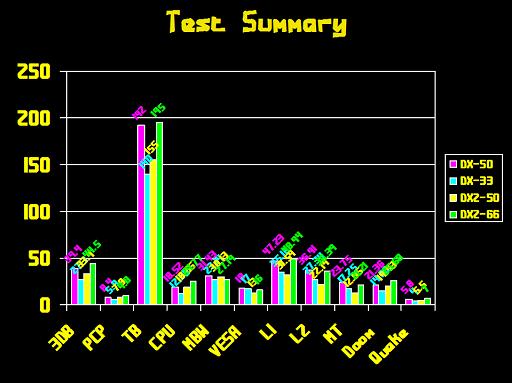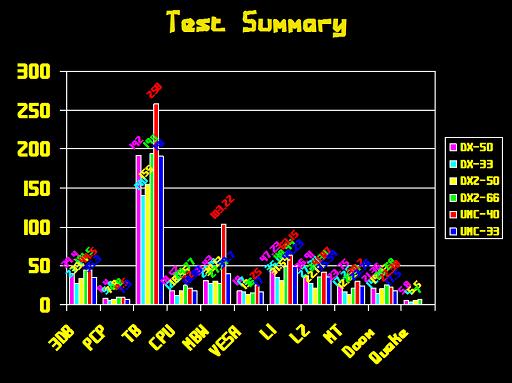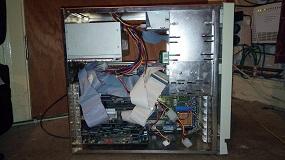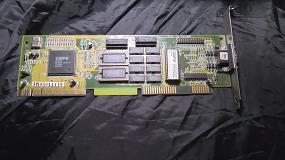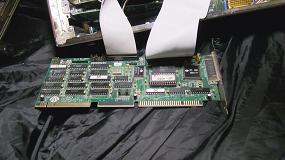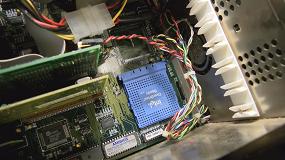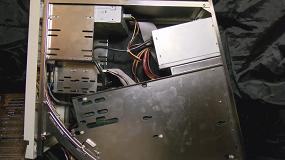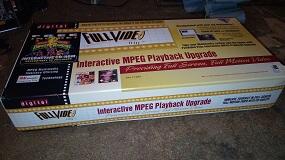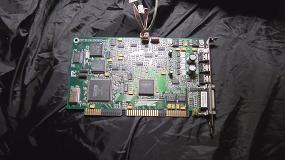|

Overview
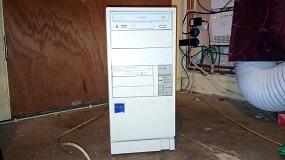
Krystal as of September 2022
Sometimes people build an old
PC for maximum performance, others insist on accuracy and some do it
purely for fun. This computer does a little of each. Named for the
character from Dinosaur Planet (The Nintendo 64 game, not the Game
Cube one), the machine is nowhere near as pretty but is certainly rather
special. For some time, the 486DX-50 was the fastest x86 processor
available and had a considerable lead over everything else. Unfortunately
its time clashed with that of VESA Local Bus, whose peripheral cards
didn't much like operating at 50MHz. To negate the issue, you could
introduce Wait States, but this would degrade performance significantly,
essentially wasting any gain you would have gotten from the CPU. It is
likely no coincidence that most DX-50 CPUs seem to show up in EISA
systems, a bus with its own clock source. Hard drive interfaces in
particular will dislike running on 50MHz VLB and may well end up
corrupting data, or outright crashing the system, if they even show up at
all. All this and yet somehow, on this system, we got lucky and made it
work.
The motherboard is worthy of
note as it is actually harming performance, in a way. The motherboard
actually performs at a level I'd consider rather average, but for 1992,
when the 486 platform was a whole lot less mature. Its CPU support is
limited to 5 Volt chips on Socket 2, which is fine for us here. There is
no 40MHz support, a speed used as a compromise by AMD, Cyrix and UMC later
on. Krystal's motherboard still uses SIMM RAM, its chipset (UMC481/482)
predates the introduction VLB so can't take much advantage of it, nor is
it able to do fancy interleaving with memory, or access the cache all too
quickly. This is what I wanted, however, as whilst a later board would
easily flatten it, this one provides the authentic experience of the DX-50
- and I know for certain this CPU has been with it since new - whereas
people had moved onto the DX2-66 by the time the later, faster boards came
around. If I wanted speed that badly, I'd use a modern computer.
Still, in any case, Krystal would have been considered High End in 1992.
The VGA card is a Chips &
Technologies F64300 which claims to be for evaluation use only, so was
likely a review board sent out to magazines or system designers. This card
is itself novel for the fact it will work on a 50MHz VLB system (no
guarantees they all will) and for having cache memory onboard, a mere
512KiB. This does little to nothing in the real world, but it was a novel
concept at least. Otherwise it's a 2MiB GUI Accelerator which performs
pretty much the same as a TSeng ET4000/W32P, produces good image quality
and seems to be quite compatible with almost all software, maybe more so
than the TSeng cards, which are prone to a few small issues.
Attached to the VGA card is a
Digital Equipment Corp. Full Video MPEG Decoder card. This card is a
little bit of an anomaly. I have never seen another one in the wild,
although they must exist somewhere. It claims to be a VCD Decoder that
will work as far back as a 386SX at 25MHz. I'm skeptical about its
operation without an x87 present, but in any case, the card does not
perform as advertised in my DX-50. The ISA bus shouldn't be a problem for
it, as this is running within spec and the manual even recommends turning
it up higher - odd, as if it took the raw MPEG stream, it shouldn't need
much bandwidth. In general, streams of VCD quality will fail to play
properly, causing an effect that looks like the DMA is choking when, in
fact, it's the card stalling hard. You have to play files with lower bit
rates, lower quality and lower frame rates. I was puzzled when none of my
files would play, only to put the demo CD in and have it come right up -
all of the files are only 12fps at much lower quality than actual VCD
streams. Files from officially pressed VCDs will not play properly, if at
all on this card. One nice thing it has going for it is that whilst it is
under license from RealMagic (who must have hated having their name on
it), it uses the digital Feature Connector instead of that dumb analog
cable. This results in no image degradation as the card gets a digital
copy of the frame buffer directly, but has the down-side of limiting you
to only 256 Color modes on your VGA card - of course the MPEG playback is
composited in at full color.
At the time of writing, the
CD-ROM drive was the only SCSI drive I had spare, but is a 2000s burner.
It is on the to-do list to replace it with a more appropriate SCSI CD-ROM
drive, likely from the mid-1990s. If you have seen the system's video on
YouTube, you will have seen it with the Mitsumi drive, but this was moved
to Lisa, as it seemed more fitting there.
The 486DX-50's reign wasn't
entirely smooth and it was also short. Intel would never again release a
486 processor for a 50MHz bus, but this would not, however, be the final
non-clock-multiplied CPU from Intel running at a high bus speed. That
honor would soon befall the Pentium, which was initially going to be
available in a 50MHz version.
 |

